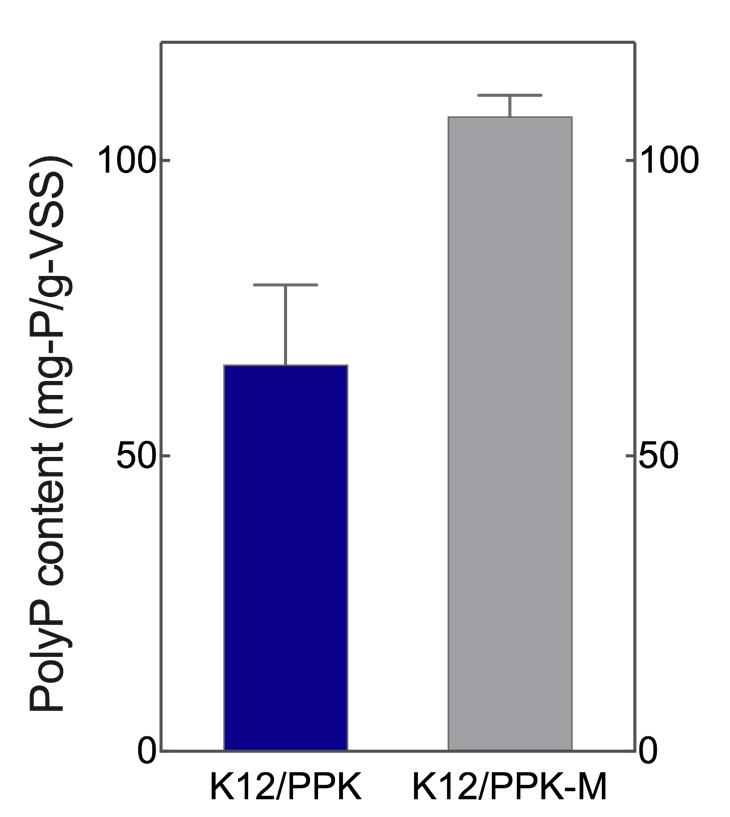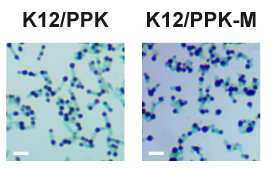Difference between revisions of "Part:BBa K4257000"
| Line 40: | Line 40: | ||
<center>Figure 3. Light microscopy images of toluidine blue stained cells. Intracellular polyP granules appear blue-purple, whereas cells appear blue-green. Scale bar, 2 μm.</center> | <center>Figure 3. Light microscopy images of toluidine blue stained cells. Intracellular polyP granules appear blue-purple, whereas cells appear blue-green. Scale bar, 2 μm.</center> | ||
| + | |||
===References=== | ===References=== | ||
Revision as of 12:35, 11 October 2022
PPK-M
PPK-M is a mutant of E. coli polyphosphate kinase (PPK), which catalyzes the synthesis of polyphosphate (polyP) using cellular ATP as the substrate. Compared to native E. coli PPK that has an alanine and a glutamine residue in position 327 and 328, PPK-M has much more strongly charged glutamate and lysine residues. It has been documented that expression of PPK-M leads to substantially higher levels of polyP accumulation in vivo by disrupting intracellular PPK-repressing interactions, as compared to the situation found with expression of PPK (Rudat et al. 2018). PolyP consists of inorganic phosphate, which is essentially derived from the uptake of exogenous phosphorus by the host cell. For this reason, if enhanced uptake of exogenous phosphorus by the host cell is desired, PPK-M will be a better option. This year, our team wants to develop an engineered E. coli K12 strain that can use phosphite as a raw material to manufacture phosphate, in which process intracellular polyP is the intermediate. Therefore, we picked highly active PPK-M.
Sequence and Features
- 10COMPATIBLE WITH RFC[10]
- 12COMPATIBLE WITH RFC[12]
- 21COMPATIBLE WITH RFC[21]
- 23COMPATIBLE WITH RFC[23]
- 25COMPATIBLE WITH RFC[25]
- 1000COMPATIBLE WITH RFC[1000]
Data:CPU-Nanjing 2022 TEAM
The yield of our final product is positively correlated with the amount of intracellular polyP and the cell biomass.
1. Biomass
We first compared the biomass of two engineered E. coli K12 strains that overexpress PPK and PPK-M, respectively.
As shown in Figure 1, the biomass of K12/PPK-M is almost identical to that of K12/PPK, indicating that highly active PPK-M would not impose additional metabolic burden upon the host cell.
2. Intracellular polyP
As expected, intracellular polyP assay showed that the amount of polyP produced by K12/PPK-M is significantly higher than that obtained by K12/PPK (Figure. 2).
3. Microscopic observation
Consistent with quantitative polyP assays, polyP granules observed in K12/PPK-M were significantly larger than those found in K12/PPK (Figure. 3).
References
Rudat, A.K., Pokhrel, A., Green, T.J. and Gray, M. (2018) Mutations in Escherichia coli polyphosphate kinase that lead to dramatically increased in vivo polyphosphate levels. Journal of Bacteriology 200(6), e00697-00617.



